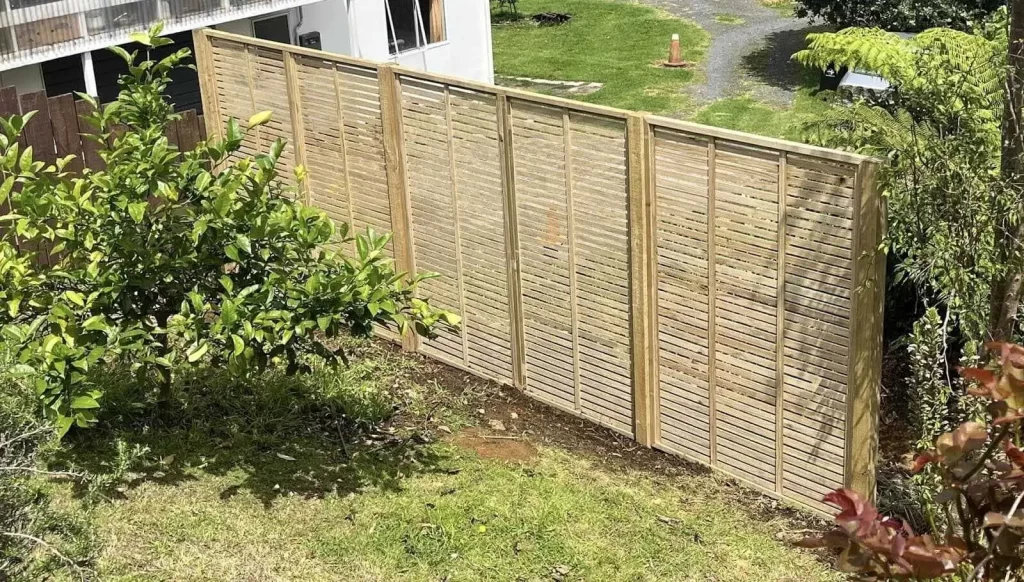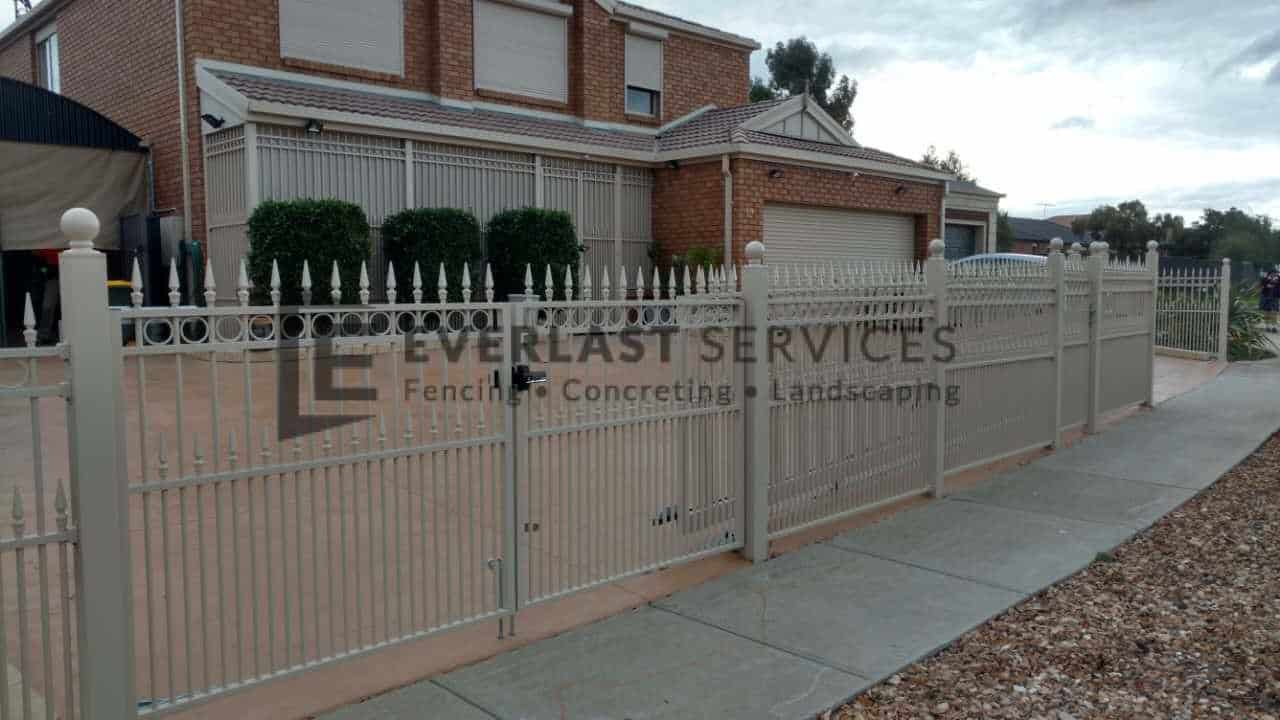A Comprehensive Guide to Fence Install: What You Required to Know Concerning Secure Fencing Solutions
When it concerns installing a fencing, you have actually obtained a whole lot to consider. From choosing the appropriate materials to recognizing regional laws, each step can really feel overwhelming. You'll require to analyze your home and decide if you wish to take on the installment yourself or employ a professional. However that's just the beginning. Let's explore the essential variables that can make or damage your fence job.
Understanding Different Types of Fencing Materials
When you're picking a fence, understanding the different kinds of fencing products is necessary. Each material offers distinct benefits and disadvantages, impacting your choice. Timber gives a classic look and can be personalized, but it needs regular upkeep and may rot with time. Plastic is low-maintenance and durable, resisting fading and bugs, but it can be pricier upfront. Chain-link fencing is cost-effective and sensible for enclosing huge locations, though it does not have personal privacy and visual charm. Metal secure fencing, like wrought iron or aluminum, supplies toughness and beauty yet might need rust security. Composite products blend the very best of wood and plastic, offering longevity with an all-natural look. Consider your spending plan, desired aesthetics, and maintenance preferences when examining these alternatives. Inevitably, choosing the appropriate material will aid you develop a fence that satisfies your requirements and boosts your property's value.
Examining Your Home and Fencing Needs
Prior to you start your fencing installment, it's important to analyze your residential or commercial property borders and the purpose of your fence. Recognizing local laws and licenses will additionally help you avoid any legal concerns down the line. By thinking about these variables, you'll guarantee your fence fulfills both your demands and neighborhood requirements.
Home Borders and Lines
Recognizing your residential or commercial property boundaries is essential for a successful fence installation, as it not only assists you figure out where your fence will go however also assures you're respecting your neighbors' space. Start by examining your property deed or survey, which generally describes the specific limits. You might also desire to talk to a professional surveyor if you're unsure.
Remember, neighborhood zoning laws might dictate fence positioning and height, so examine those regulations also. Taking these actions guarantees your fencing is properly placed and compliant, making the entire process smoother for you.
Objective of Secure Fencing
Secure fencing offers numerous purposes that can considerably improve your property. It gives safety by producing an obstacle that prevents trespassers and safeguards your belongings. Second, it supplies personal privacy, allowing you to appreciate your outside area without stressing about prying eyes. Third, secure fencing can specify your building borders, making it clear where your space ends and your next-door neighbor's starts. Additionally, it can enhance the aesthetic charm of your home, adding personality and design while increasing aesthetic appeal. Finally, a well-placed fence can assist take care of noise from nearby roadways or next-door neighbors and even maintain pets and children safe. By reviewing your specific requirements, you can pick the ideal sort of fence to achieve these advantages effectively.

Local Regulations and Permits
Exactly how can you assure your fencing installation abides with local policies? Start by contacting your regional zoning workplace or community website. Fence Builders. They often have guidelines concerning fencing elevation, materials, and placement. You'll likewise intend to figure out if you need a license prior to starting your project. Some areas require authorizations for any type of brand-new fencing, while others may just require them for taller frameworks.
Furthermore, consider home lines and any easements on your land. Marking your borders can stop conflicts with neighbors or potential legal problems. By understanding these regulations upfront, you can stay clear of pricey mistakes and identify your fencing is built to last, improving both your residential or commercial property's value and your satisfaction.
Local Rules and Permits for Fence
Before you begin your fence project, it's crucial to check regional policies and get any kind of essential authorizations. Each city or area has its very own policies pertaining to fencing height, materials, and positioning. These guidelines guarantee that your fencing abides by safety and security requirements and area looks.
Start by seeing your local zoning workplace or their website to discover certain needs. Fence Contractors. You could need to submit a fencing plan, describing dimensions and products. Some locations might also need a survey to verify residential or commercial property borders. Don't neglect to consider any kind of house owners' organization (HOA) guidelines, as they can impose additional restrictions.
Overlooking to comply with these guidelines can lead to fines or required elimination of your fencing, wasting both money and time. Take the time to study and secure the correct licenses for a smooth installation process. This action is essential in making sure your job aligns with local legislations and neighborhood standards.
Picking Between Do It Yourself Installment and Specialist Solutions
Are you considering whether to tackle the fencing installment yourself or hire a professional? This decision pivots on numerous elements. First, evaluate your ability level. If you're handy and have experience with comparable tasks, DIY might conserve you cash. However, be honest concerning your capacities; blunders can cause added expenses and frustrations.
Following, think about the moment commitment. Mounting a fencing takes time, and if you're juggling a hectic timetable, employing a professional can assure it obtains done successfully. In addition, consider the intricacy of the Clicking Here task. If your lawn has tough surface or specific design needs, professionals bring experience that can make a difference.
Last but not least, factor in local policies. A specialist knows the licenses and codes required, helping you stay clear of potential fines. Eventually, evaluate your abilities, time, intricacy, and policies to make the best option for your secure fencing project.
Step-by-Step Guide to Fencing Installment
Once you've determined to progress with your fencing setup, complying with a structured step-by-step strategy will certainly guarantee a smooth procedure. Beginning by marking the fencing line with risks and string to picture the design. Next, check local guidelines to confirm compliance with height and residential or commercial property lines.
Dig post holes at the very least 2 feet deep, spaced according to your fencing kind-- normally 6 to 8 feet apart. Place the blog posts right into the openings and fill them with concrete for security. Once the articles are established, connect the straight rails or panels, seeing to it they're degree.
Secure the panels or pickets, validating they straighten properly. If you're making use of entrances, install them last, guaranteeing they turn easily. Lastly, look for any type of loose links and make necessary adjustments. Your fence ought to currently be ready to enhance your residential property and give the personal privacy or safety you need!
Maintenance Tips for Durability of Your Fence
To maintain your fencing looking excellent and long-term longer, routine upkeep is crucial. You should establish a cleaning timetable, examine for any kind of damages, and use safety coverings as required. By remaining proactive with these jobs, you'll assure your fence stays tough and appealing for several years ahead.
Regular Cleansing Schedule
While it may be very easy to overlook, establishing a normal cleaning routine is important for preserving the longevity of your fencing. Begin by rinsing your fence with water at the very least when every season to get rid of dust and debris. For wooden fences, make use of a gentle soap solution and a soft brush to scrub away any kind of mold or mold. Do not forget to look for any type of corrosion on metal fencings; a cord brush can help eliminate it, adhered to by a coat of rust-resistant paint. If you live in an area with heavy plant pollen or dirt, you may desire to enhance your cleaning frequency. Keeping your fencing clean not just boosts its appearance but also extends its life, saving you money over time.
Evaluate for Damages
On a regular basis checking your fence for damages is important if you want to preserve its integrity and longevity. Start by strolling around your fence to look for noticeable indications of wear, such as fractures, loose boards, or rust. Check for any signs of parasites, like termites or woodpeckers, that could endanger your fencing's framework.
Apply Safety Coatings
After examining your fence for damage, applying protective coatings is a key step this in ensuring its durability. Depending on the product, you'll intend to select the best sort of covering. For wooden fencings, a premium sealant or wood tarnish can prevent moisture absorption and deter insects. If your fencing is plastic or metal, consider a UV-protective spray or paint to stop fading and corrosion.
Make certain to cleanse the surface area completely prior to application, as dirt and grime can threaten the coating's performance. Use the finishing in completely dry weather for better adhesion, and do not neglect to adhere to the producer's directions for the best outcomes. On a regular basis reapply every few years to maintain your fencing looking fantastic and standing strong versus the aspects.
Cost Considerations and Budgeting for Your Fence Job
When intending your fencing task, recognizing price factors to consider is vital to remaining within spending plan. Beginning by establishing the kind of material you want, as costs can vary significantly in between timber, vinyl, and metal. Do not fail to remember to consider labor costs-- hiring specialists may save you time but can boost your overall costs.
Next, determine your residential property to determine the straight footage needed, as this directly effects material costs. Furthermore, consider any kind of authorizations you could need, which can contribute to your spending plan.

Last but not least, it's a great idea to establish aside a contingency fund for unexpected expenses. By intending thoroughly and taking into consideration these aspects, you can develop a reasonable budget plan that fulfills your fence needs without breaking the bank.
Regularly Asked Concerns
For how long Does the Typical Fence Installment Take?
The average fencing installment normally takes one to 3 days, relying on the fence type and size of your yard. You'll require to take right visit this site into account any hold-ups because of weather or allow demands as well.
What Should I Do if My Fence Is Damaged?
If your fence is harmed, initially examine the extent of the damages. Repair minor issues yourself, but also for major troubles, think about calling an expert. Do not wait also long; it'll aid avoid additionally problems.
Can I Install a Fence on an Incline?
Yes, you can install a fencing on an incline. You'll require to adjust your installment approach, either by tipping the panels down or making use of a racked style to assure security and correct positioning with the terrain.
What Are the very best Practices for Fence Paint?
To repaint your fence properly, start with correct cleaning and sanding. Usage high-quality paint and use in also strokes. Do not neglect to select the ideal weather condition for painting, guaranteeing it's completely dry and mild.
Exactly how Typically Should I Examine My Fence?
You should evaluate your fence at the very least twice a year, focusing on signs of damage, rot, or rust. Normal checks help you catch problems early, guaranteeing your fencing remains durable and aesthetically enticing much longer.
 Bradley Pierce Then & Now!
Bradley Pierce Then & Now! Danny Pintauro Then & Now!
Danny Pintauro Then & Now! Samantha Fox Then & Now!
Samantha Fox Then & Now! Jane Carrey Then & Now!
Jane Carrey Then & Now! Peter Billingsley Then & Now!
Peter Billingsley Then & Now!